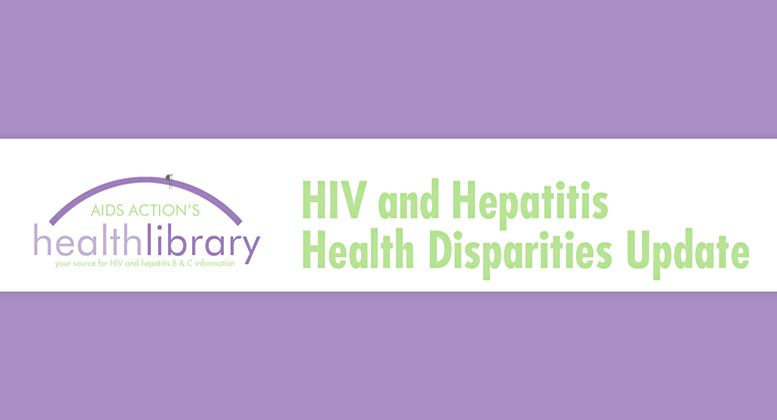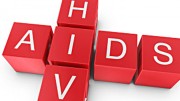First National HIV PrEP Summit to be held on December 3 and 4 in San Francisco
By: Eric Brus*—
The Fenway Institute and Harlem United recently compiled summaries of each major presidential candidate’s and their party’s positions on a range of health equity topics, including: HIV/AIDS, LGBT equality, healthcare, substance use, mental health, and housing. These summaries are in two forms: 1) a 45-page document that provides detailed information about the stated positions and health equity histories, when available, for the presidential and vice presidential candidates, as well as relevant parts of the party platforms for the Democratic, Republican, Green, and Libertarian parties; and 2) a web page, Issues That Matter: Comparing the Candidates and Parties, which includes brief excerpts from the party platforms and candidate statements. After the 2016 election next month, we plan to use these two resources to provide a more detailed summary of the health equity positions of the winning presidential candidate and the platforms of the majority party(ies) in the U.S. House and Senate.
First National HIV PrEP Summit Slated for December
The first National HIV PrEP Summit (NHPS) will be held on December 3 and 4 in San Francisco. The event will focus on the implementation of PrEP and other biomedical interventions as community-level options for reducing HIV transmission. According to NMAC, a primary sponsor for the event, the main goals of the NHPS are to bring together HIV leaders and stakeholders to discuss ways for increasing access to high-quality PrEP services among people of color and ways for building the infrastructure needed to support biomedical HIV prevention. In related news, NMAC is developing a two-part blueprint for HIV biomedical prevention. The first part of the blueprint, which will be released during the NPHS, will summarize the current state of biomedical HIV prevention. The second part, to be based on the insights of Summit participants, will include policy recommendations about biomedical HIV prevention for the next U.S. President’s White House AIDS czar and the secretary of the Department of Health and Human Services.
Increased Risks of Chronic Health Conditions in HIV+ Medicare Beneficiaries
People aged 65 and older who are living with HIV have significantly higher risks of many chronic health conditions compared to uninfected persons of similar age, according to new study by researchers from CDC’s Office of Health Equity. These findings are based on an analysis of national Medicare claims data from 2006 to 2009 for more than 29 million Medicare-eligible beneficiaries. For the purposes of the study, the CDC researchers considered beneficiaries with HIV diagnosis codes for outpatient, inpatient, or skilled nursing facility claims to be HIV+. They then compared the demographic characteristics and rates of chronic disease for the HIV+ and uninfected beneficiaries.
A total of 24,735 (0.09 percent) of the Medicare beneficiaries studied were HIV+. The median age of the HIV+ Medicare beneficiaries was about 5 years younger than the age of those without HIV. HIV+ beneficiaries were nearly twice as likely to be male and five times as likely to be African-American or Hispanic, compared to uninfected beneficiaries. They were also more likely to live in California, Florida, New Jersey, New York, or Texas.
Overall, HIV+ Medicare beneficiaries were about twice as likely as their uninfected counterparts to have high blood pressure, high blood lipid levels, ischemic heart disease, rheumatoid/osteoarthritis, or diabetes. In addition, compared to uninfected persons, the HIV+ beneficiaries were about 2.4 times as likely to have one or more of these chronic conditions and 7 times as likely to have all five.
“With the aging HIV-positive patient population, HIV providers in the Medicare network will have to prepare for patients with different medical needs, including a higher likelihood of chronic comorbid health conditions,” the researchers note. “Similarly, chronic disease practitioners who serve in the Medicare network, such as cardiologists and endocrinologists, should be aware that their Medicare patients may be receiving treatment for HIV infection. Greater collaboration between infectious disease and chronic disease practitioners will be needed to ensure the appropriate medical management of these patients including complex medication regimens.”
CDC Reports Examine HIV Testing Trends Among MSM and Hispanics/Latinos
HIV Testing Among HIV+ MSM Prior to Their Diagnosis: Since 2006, the CDC has recommended that sexually active gay, bisexual, and other men who have sex with men (MSM) be tested for HIV at least annually. A variety of HIV testing initiatives and strategies have been implemented during the past decade to expand HIV testing among MSM and thereby increase early diagnosis and treatment and reduce transmission. To better understand HIV testing patterns among HIV+ MSM prior to their diagnosis, CDC researchers recently analyzed data from CDC’s National HIV Surveillance System (NHSS). Their study, published last month in the Morbidity and Mortality Weekly Report (MMWR), focused on 21 jurisdictions conducting HIV incidence surveillance during the period from 2007 through 2013.
The researchers compared the number of newly diagnosed MSM who had a negative HIV test result in the 12 months before diagnosis for the two years at the beginning and end of the study period. Their analysis showed that the proportion of MSM who had a negative HIV test during the 12 months before diagnosis increased from 48% in 2007 to 56% in 2013, “indicating a trend toward increased HIV testing and earlier HIV diagnosis among persons most at risk for HIV,” according to the researchers. “Although testing facilitates early detection of HIV, given the large numbers of MSM still acquiring HIV (many after having a negative HIV test), enhanced HIV testing efforts might incorporate provision of biomedical prevention interventions such as pre-exposure prophylaxis for persons testing negative but still at risk for infection to reduce HIV acquisition.”
HIV Testing and Outcomes Among Hispanics/Latinos: In another report published in the MMWR, CDC researchers evaluated HIV testing and outcomes among Hispanics/Latinos in the U.S., Puerto Rico, and the U.S. Virgin Islands. They analyzed data from the National HIV Prevention Program Monitoring and Evaluation system on more than 3 million CDC-funded HIV test events conducted during 2014.
Their analysis showed that 22.6% of CDC-funded HIV testing events and 23.3% of new HIV diagnoses were among Hispanics/Latinos. They also found that only about 60% of newly diagnosed Hispanics/Latinos were linked to medical care within 90 days of diagnosis―well below the 85% linkage-to-care goal in the National HIV/AIDS Strategy. Newly diagnosed Hispanics/Latinos living in U.S. dependent areas and the Northeast had the highest rates of linkage to HIV medical care, referrals for partner services, and referrals for HIV risk-reduction services, while those living in the South had the lowest rates.
“The findings emphasize the need for culturally and linguistically sensitive prevention strategies to promote diagnosis of HIV infection and linkage to medical care among Hispanics/Latinos to improve health outcomes,” according to the researchers. “Stakeholders and partners should focus on prevention and care strategies for Hispanic/Latino subpopulations (e.g., men who have sex with men and persons who inject drugs) to reduce HIV-related disparities.”
Global HIV/AIDS Deaths Fell by One-Third During the Past Decade
Between 2005 and 2015, the number of HIV/AIDS deaths declined approximately 33% from 1.8 million to 1.2 million per year, according to a recent report by researchers in the Global Burden of Disease (GBD) 2015 Study. The GBD Study provides a detailed assessment of all-cause and cause-specific mortality for nearly 250 diseases in 195 countries and territories during the 35-year period from 1980 through 2015. Globally, life expectancy at birth increased from 61.7 years in 1980 to 71.8 years in 2015, according to GBD researchers. “Several countries in sub-Saharan Africa had very large gains in life expectancy from 2005 to 2015, rebounding from an era of exceedingly high loss of life due to HIV/AIDS” as a result of increased access to effective antiretroviral treatment for HIV and efforts to prevent mother-to-child transmission of the virus. The researchers noted that the significant decline during the past decade in the total number of deaths worldwide from communicable, maternal, neonatal, and nutritional conditions was largely attributable to major decreases in the age-standardized mortality rates for HIV/AIDS (42%) and malaria (43%), as well as a 30% decline in the rate of neonatal preterm birth complications and a 29% decrease in maternal disorders.
SIECUS Develops PrEP Education Toolkit for Providers Who Serve Youth
The Sexuality Information and Education Council of the United States (SIECUS) has developed an online resource to support primary care providers who wish to offer HIV pre-exposure prophylaxis (PrEP) to adolescents and young adults under age 25. According to SIECUS, the 64-page PrEP Education for Youth-Serving Primary Care Providers Toolkit combines existing and new tools and resources to help youth-serving primary care providers (PCPs) more effectively educate, counsel, and when appropriate, prescribe PrEP for young people. The Toolkit is divided into six sections:
- general overview of PrEP, as well as issues specifically related to prescribing PrEP to youth;
- clinical tools with guidance about the indications for PrEP, potential side effects, and drug interactions, as well as information about starting PrEP, supporting adherence, and treating special populations;
- billing considerations for PrEP;
- HIV, stigma, and social determinants of health;
- laws and policies related to youth and HIV; and
- links to additional online PrEP resources, organized by topic.
*Eric Brus is the Director of Health Information at AIDS Action Committee. This report is produced by the Health Library of the AIDS Action Committee in collaboration with the New England AIDS Education and Training Center Minority AIDS Initiative Project. The full version is available online.
[From a News Release]







